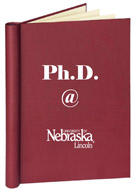Graduate Studies, UNL

Dissertations and Doctoral Documents, University of Nebraska-Lincoln, 2023–
First Advisor
Yufeng Ge
Degree Name
Doctor of Philosophy (Ph.D.)
Department
Agricultural and Biological Systems Engineering
Date of this Version
5-2024
Document Type
Dissertation
Abstract
Artificial Intelligence (AI) has advanced rapidly in the past two decades. Internet of Things (IoT) technology has advanced rapidly during the last decade. Merging these two technologies has immense potential in several industries, including agriculture.
We have identified several research gaps in utilizing IoT technology in agriculture. One problem was the digital divide between rural, unconnected, or limited connected areas and urban areas for utilizing images for decision-making, which has advanced with the growth of AI. Another area for improvement was the farmers' demotivation to use in-situ soil moisture sensors for irrigation decision-making due to inherited installation difficulties. As Nebraska has a unique agricultural industry, including 8.6 million irrigated croplands accounting for 14.8% of all irrigated croplands in the United States and a significant amount of under-connected farmlands, we decided to address these two pressing issues.
Chapters three and five discuss the design and development of the AICropCAM platform. AICropCAM can extract useful information such as crop type, canopy coverage, and pest pressure and transmit it to cloud servers through low-power, long-range communication mediums using deep learning models. This platform can reduce the digital divide in crop monitoring digital solutions.
Chapter four discusses an effort to predict the soil water properties, including soil water content, soil water deficit, and remaining water content, through machine learning models that depend on the above canopy sensors and real-time weather data. The current models were trained using 2022 and 2023 data, showing promising prediction accuracy above 95%. However, these models must be tested in the long run for commercial use.
At the top level, the case studies discussed in this dissertation will help reduce the rural-urban gap and digital divide in agriculture. Additionally, the proposed AICropCAM and the above-ground sensor use for soil water property estimation can increase pivot irrigation systems' crop monitoring and improve irrigation decision-making tools. Ultimately, the case studies in this dissertation conclude that the integration of AI and IoT can advance the crop monitoring practices used for precision agriculture in mid-western irrigated cropping systems.
Advisor: Yufeng Ge
Recommended Citation
Chamara, Nipuna, "Next-generation Crop Monitoring Technologies: Case Studies about Edge Image Processing for Crop Monitoring and Soil Water Property Modeling via Above-Ground Sensors" (2024). Dissertations and Doctoral Documents, University of Nebraska-Lincoln, 2023–. 110.
https://digitalcommons.unl.edu/dissunl/110
Included in
Agriculture Commons, Agronomy and Crop Sciences Commons, Artificial Intelligence and Robotics Commons, Bioresource and Agricultural Engineering Commons, Graphics and Human Computer Interfaces Commons


Comments
Copyright 2024, Nipuna Chamara Abeysinghe Herath Mudiyanselag. Used by permission